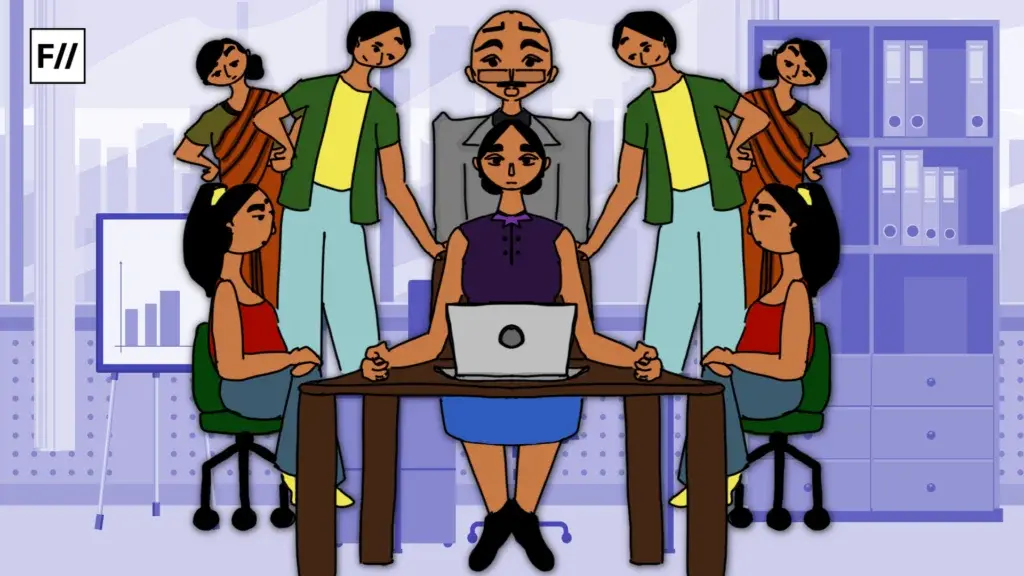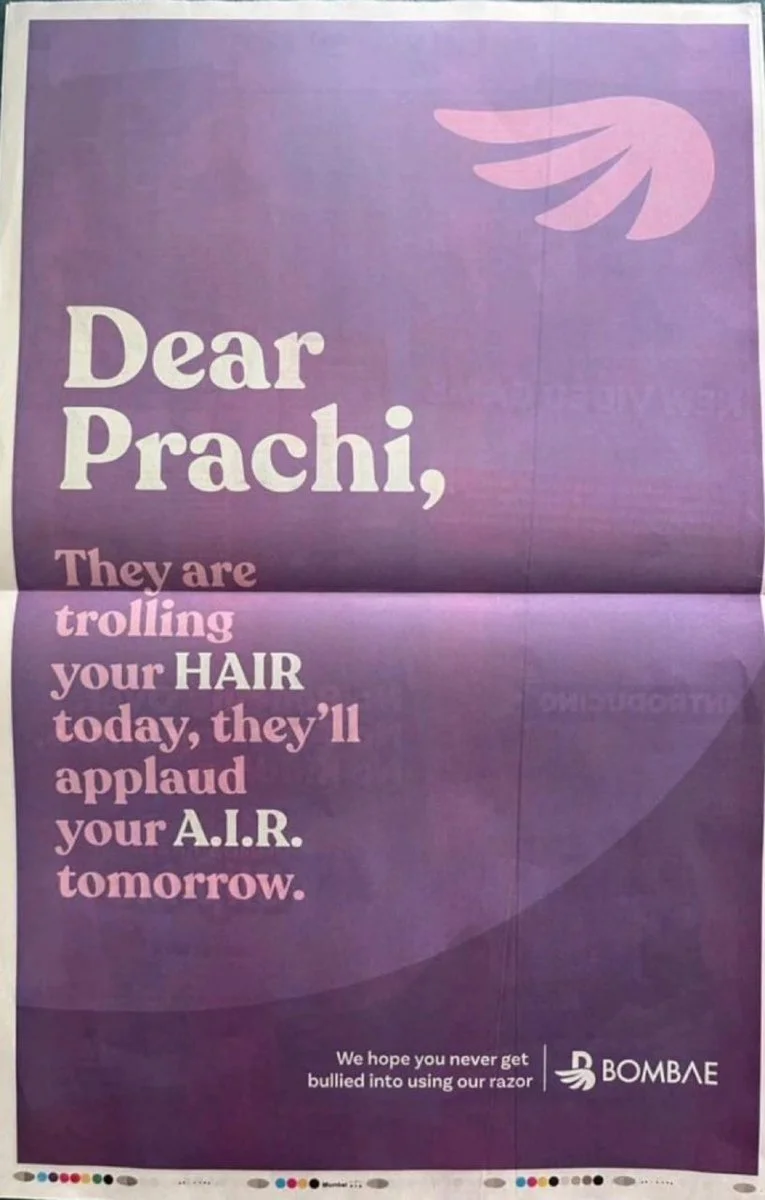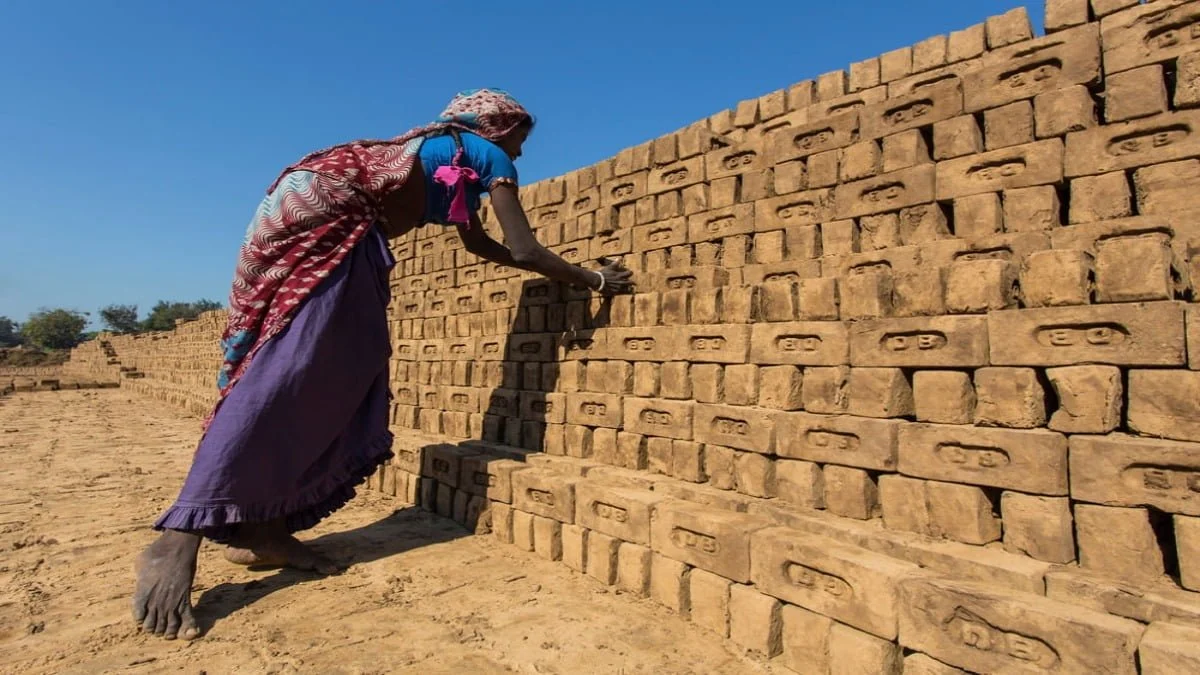As I step into the bustling corridors of my workplace, I can’t help but feel a familiar sense of unease creeping over me. It is not the looming deadlines or the challenging projects that weigh on my mind, but rather the unspoken scrutiny of my appearance that seems to follow me like a shadow. In a society where beauty is often equated with worth, navigating the workplace as a woman comes with its own set of challenges, chief among them being body image discrimination.
In a society where beauty is often equated with worth, navigating the workplace as a woman comes with its own set of challenges, chief among them being body image discrimination.
According to a study conducted by the Centre for Equity Studies, nearly 68% of women in India have reported experiencing some form of body image discrimination in the workplace. This discrimination often takes subtle forms, such as comments about weight or appearance, but can also manifest in more overt ways, such as hiring and promotion biases based on physical attributes.
Additionally, research by the Indian Journal of Gender Studies has found that women from marginalised communities, such as Dalit and Adivasi women, are disproportionately affected by body image discrimination in the workplace due to intersecting factors of caste, class, and gender. This underscores the urgent need to address systemic inequalities and biases that perpetuate discrimination in the workplace.
Intersectional body image discrimination at the workplace
Body image discrimination intersects with various dimensions of identity, exacerbating inequalities for marginalised groups. For women from oppressed castes or marginalised communities, the pressure to conform to mainstream beauty standards adds another layer of oppression. Additionally, ageism compounds the challenges faced by older women, who are often overlooked or undervalued in a youth-centric workplace culture. By acknowledging these intersecting factors, we gain a deeper understanding of the systemic barriers that hinder women’s advancement in the workplace.
In fact, the onset of such issues for women can be traced back to their very childhood. This was made abundantly evident in the case of Prachi Nigam, a teenager who topped the 10th board examination. Such an achievement calls for celebration, however in an exclusive BBC interview, the teenager confessed that she would have been happier scoring much less. Prachi was allegedly trolled and was even used as fodder for marketing tactics by brands. At just 15, Prachi has been subjected to bullying due to her appearance, which is as common a phenomenon in villages as it is in cities.
As issues like this keep propping up, perhaps it is time for us to take a step back and consider how our intervention can strive to solve issues regarding body image in women, especially in young girls.
Impact: the hidden costs of workplace bias
The toll of body image discrimination extends far beyond surface-level judgments. It seeps into the psyche, eroding confidence and self-worth. Women who are constantly scrutinised for their appearance may internalise these biases, leading to feelings of inadequacy and impostor syndrome. Professionally, the impact is equally significant, with studies showing that women deemed less attractive are often overlooked for leadership positions and face barriers to career progression. This dual burden of psychological and professional consequences perpetuates a cycle of inequality in the workplace.
As I navigate my way through the maze of cubicles, I can’t shake the feeling of being constantly scrutinised and judged based on my appearance. From subtle remarks about my weight to not-so-subtle comments about my age, it’s clear that societal beauty standards have seeped into the fabric of the workplace, shaping perceptions of competence and professionalism.
A friend confides in me about being passed over for a promotion in favour of a younger, less experienced colleague simply because she didn’t fit the company’s image of a “perfect” employee.
I’m not alone in my experiences. Speaking to my female colleagues, I hear echoes of my own struggles reflected in their stories. A friend confides in me about being passed over for a promotion in favour of a younger, less experienced colleague simply because she didn’t fit the company’s image of a “perfect” employee. Another recounts the humiliation of being told to “dress more professionally” when she dared to wear a sleeveless top to work on a hot summer day.
Solutions: charting a path towards equity
Addressing body image discrimination and ageism requires a multifaceted approach that challenges ingrained biases and fosters inclusivity. Organisations must prioritise diversity and inclusion initiatives, creating environments where all employees feel valued and respected. Training programs on unconscious bias and sensitivity can help mitigate discriminatory behaviours, while mentorship and leadership development programs can provide opportunities for women to advance in their careers. Additionally, policies that promote flexible working arrangements and accommodate diverse needs can help create a more supportive workplace culture.

It’s clear that addressing body image discrimination requires a multifaceted approach that goes beyond surface-level solutions. Organisations must implement comprehensive diversity and inclusion initiatives that prioritise equal opportunities and celebrate diversity in all its forms. Training programs on unconscious bias and sensitivity towards appearance-related issues can help mitigate discriminatory behaviours and foster a culture of respect and acceptance.
As I reflect on my own experiences and those of women around me, I’m reminded of the importance of reclaiming agency over our bodies and redefining beauty on our own terms. By promoting self-love, body positivity, and confidence-building initiatives, we can create workplaces where every woman feels valued, respected, and empowered to excel, irrespective of societal beauty standards.
The prevalence of body image discrimination in Indian workplaces is a pressing issue that demands attention and action.
The prevalence of body image discrimination in Indian workplaces is a pressing issue that demands attention and action. By interrogating societal norms, amplifying marginalised voices, and advocating for systemic change, we can pave the way towards a future where women are judged by their abilities, not their appearance. It’s time to go beyond beauty standards and create workplaces that embrace the diversity and inherent worth of every individual.

Addressing body image discrimination and ageism is not just a matter of fairness; it is essential for creating workplaces that uphold dignity, equality, and respect for all. By advocating for systemic change and fostering a culture of inclusivity, we can create environments where every woman feels valued and empowered to thrive. It’s time to move beyond beauty standards and ageist stereotypes, and create workplaces that celebrate diversity and recognise the inherent worth of every individual.
About the author(s)
A lawyer by qualification, Swarnima is a feminist writer and cultural critic with an interest in Indian literature and art. She has been working as a creative writer and content strategist in Mumbai for almost 3 years now. Find her here: Swarnima Sharma






